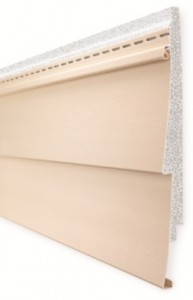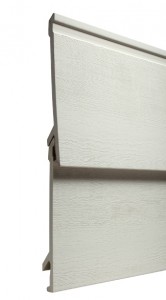When it comes to protecting one’s home and still  adding value, one of the best and most economical ways to do so is by investing in high-quality cladding. Not only does it serve to protect the exterior from unexpected fluctuations in the local climate, it also helps to maintain the aesthetic look and appeal of the home as well. A savvy homeowner can take cladding a step further by choosing to use insulated cladding to both protect the home and help offset heating and cooling costs.
adding value, one of the best and most economical ways to do so is by investing in high-quality cladding. Not only does it serve to protect the exterior from unexpected fluctuations in the local climate, it also helps to maintain the aesthetic look and appeal of the home as well. A savvy homeowner can take cladding a step further by choosing to use insulated cladding to both protect the home and help offset heating and cooling costs.
What Exactly Is Insulated Cladding, and How Does it Help?
Essentially, cladding is the process by which one material is used to cover up another. In terms of home construction, cladding is used on the exterior of the structure to help protect it from the elements. When the cladding is insulated it actually helps stop the slow escape of the home’s warmth through the walls; conversely it can also keep the home cool during the hot summer months by maintaining the inside temperature at comfortable levels. Since more than half of the heat inside a home leaks out through its walls, investing in cladding with insulation is a smart choice. Additionally, cladding can also help to keep rainwater from entering the structure and causing expensive water damage, and is routinely used around doorways, windows, chimney and roof areas.
Using Cladding to Add Value and an Additional Level of Protection
When properly installed, cladding can increase the value of the home by giving it a resilient exterior that offers a sturdy level of protection against the most volatile of climates. This resiliency is due to the materials utilized, which are most commonly come in the form of metal, aluminum, or plastic, or a combination of any of these. Aside from the obvious climate-controlled benefits that cladding offers, the extra insulation also offers significant noise reduction, which is especially desirable where loud noise is a concern.
Installing Insulated Cladding
Do-it-yourselfers and adventurous weekend warriors who don’t mind putting in a little sweat equity might find that this is a simple enough job to do on one’s own. The many cladding options include easy-to-install materials that make completing this task a snap. However, improper or faulty installation can greatly diminish the insulating performance of the cladding. In these cases, professional help might make more sense, and guarantee the level of performance that one expects from this type of investment.
For those who prefer to have a professional take a look at installing their insulated siding, you can Get A Quote or for more information use our Siding Calculator.

